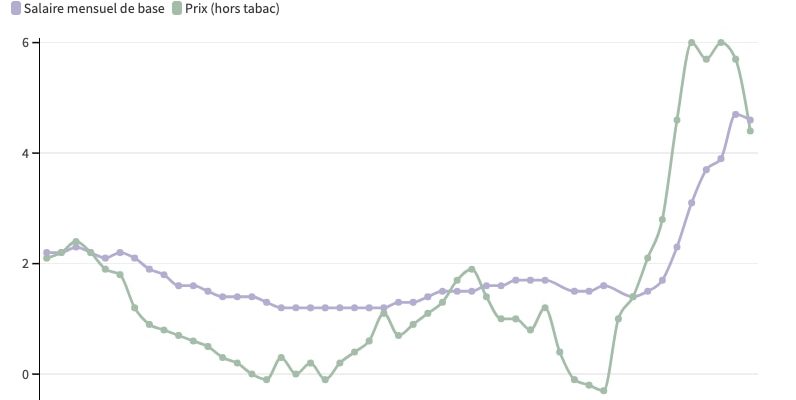The question of wages is back on the social calendar: this Friday, October 13, the inter-union announces a day of national mobilization in transport, hospitals and even in schools.
Because in reality, wages lag behind inflation. This is even the main lesson of a Rexecode study published Thursday. The loss of purchasing power incurred amounts to 1.5%.
According to the Institute of Economic Studies, the main explanation for this loss of purchasing power is to be found in a drop in average labor productivity, of 5% since 2019. Rexecode considers that this development is a major trend, which could “augur weak wage growth”.
Between the last quarter of 2020 and June 2023, prices exploded by more than 6%, before a slight decline to 4% year-on-year. Meanwhile, salaries struggled to exceed the 5% increase mark over the current year at the same period.
